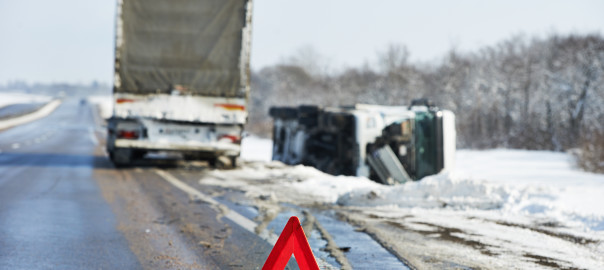We at Chicago Towing care about our customers safety – and it’s important, deep in this winter, to understand safe driving techniques for icy or snowy roads that might have slippery traction and low amounts of visibility. In order to lower the chances of having an accident, follow our tips for preventing winter car accidents. And if you do have an accident, don’t hesitate to contact us for expert roadside assistance.
Never Brake Suddenly
Ice is going to cause your car to slide whether you’re braking slow or fast, but what really makes the difference is when your car is going to stop. If you slowly decelerate your vehicle before stopping, it gives it less physical momentum while it’s on ice. This means even if you’re going to slide, you won’t be sliding as far, and it will be easier to reclaim control of the vehicle. If you’re on ice and suddenly break, you will skid for a while, which can be potentially very dangerous.
Always be aware of the Windshield
Poor visibility causes many snowy weather automobile accidents. It’s important to keep track of when it will be rainy or snowy by keeping watch of daily weather reports before heading out on the road. If you have to drive around inside the snow, make sure that your windshield has been cleared of snow or ice, and that the window wipers work.
Routine Inspections
It can be a smart move to inspect and upgrade your vehicle. Get your car checked out by expert technicians, and perhaps install brand new winter tires with a strong tread that can easily work with icy or snowy conditions. We also recommend applying a rust coat before taking it on salty roads, which will prevent exponential corrosion and damage. Also, make sure your brakes are always tested throughout the year – and if they slip, make a weird noise, or feel generally like their not working, make sure to replace them before embarking on an icy journey.
Maintain Tire Pressure
Any low air temperatures will cause the tire pressure of your car to drop, and if it drops enough, it can be quite dangerous. Make sure that your tires are always fully filled, and even regularly tested. Full tires work much better, and are much better equipped to handle any cold weather related challenges that might pop up on the road – for reasons such as an increased efficacy of the tire’s treads.

